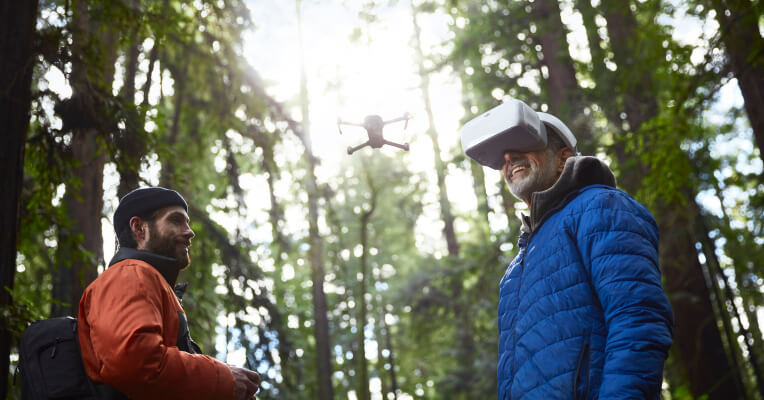FPV goggles are an essential part of the first-person-view experience. The growing popularity of FPV flying and drone racing has led to the rapid growth of FPV equipment market. Today, you can see a number of FPV goggles of different brands and models releasing each day. In this definitive guide, we will provide you the information that will help you make the decision on which FPV goggle suits you the best.

Things to look for when selecting the best FPV goggles:
When it comes to the best FPV goggles, they are the combination of features and comfort. The following factors will help you in making a purchase decision.
#1 Form Factor
Generally, FVP goggles come in two form factors:
- Box Goggles
- Slimline Goggles
The box FPV goggles are the cheaper models that have the image displayed on 3-6 inch LCD screen. Box goggles offer a larger contact area between the user’s face and the goggle; hence, they are more comfortable. Moreover, thanks to the larger screen, the box goggles offer larger FOV (field of view). However, one aspect that the users might not find pleasing about box goggles is the weight. They are heavier, and prolonged use is not recommended.
Slimline goggles, on the other hand, have two screens. These goggles are considerably lighter and smaller as compared to box goggles; hence, they are very easy to carry around.
#2 Resolution
As the saying goes, the higher the resolution, the better the picture quality. However, with the limitations to the resolution of the current FVP systems and what the 5.8Ghz video transmission system can handle, a higher resolution might not benefit you that much.
Nevertheless, with the advancement in the FVP systems and the likes of HD FPV goggles, they will retain their effectiveness. There are certain HD FPV goggles that even support HDMI input. Thus, it becomes easy to hook the system to a computer/laptop as an external monitor.
Check out our Best Goggles List to get a better understanding of the resolution factor.
#3 Field of View (FOV)
The larger the field of view, the more immersive the picture is. The FOV is a bit confusing concept, as measuring the FOV in FPV goggles is a little complicated. That is if an FPV goggle with 4:3 aspect ratio has the same FOV as an FPV goggle with 16:9 aspect ratio, surprisingly, the 4:3 screen will be more immersive, as the screen will appear larger.
#4 Inter Pupillary Distance (IPD)
The Inter Pupillary Distance measures the distance between the centers of the pupils of your eyes. Some people’s eyes are set apart, and some are set closer.
The IPD factor is relevant to FVP goggles having two separate screens. IPD plays a crucial role in your FPV experience because improper IPD setting in your FPV goggle can make the image look blurry and it will become difficult to focus.
Final Words
FPV goggles can undoubtedly enhance your drone flying experience while providing you with more flight accuracy. So if you are looking to buy an FPV goggle, you need to buy one that goes well with your drone and need to consider several factors. The mentioned factors only cover the basics of FPV goggles, so you need to perform research on your part as well.
You’ll also like: Top 10 Best Drone Cameras